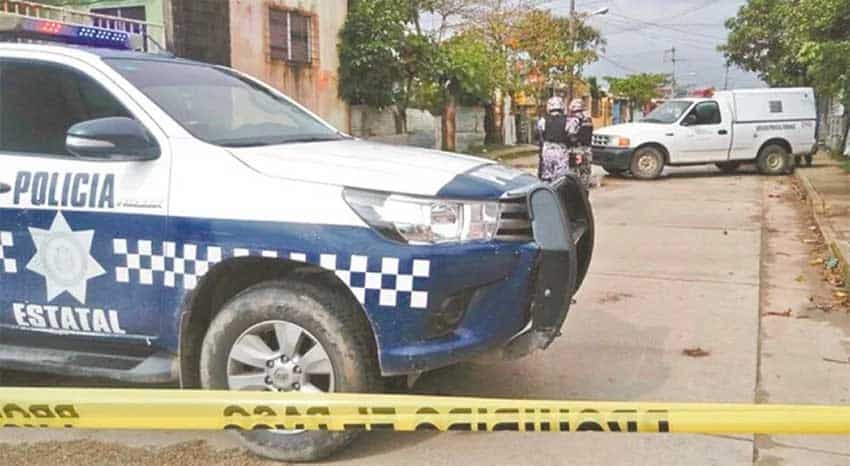Mexico is on track to record its most violent year on record, according to security experts who point out that the daily homicide statistics provided by the federal government have underestimated the actual number by more than 20%.
There were 7,056 intentional homicides in the first three months of 2019 – an average of 78 per day – according to daily reports issued by the Secretariat of Security and Citizens Protection (SSPC), which compiles data from a range of sources.
But the official homicide figures for the first quarter of this year as reported by the National Public Security System (SESNSP) will exceed 8,500 if the 21.5% underestimation seen in the daily reports during the first two months of the year continues.
The former reported 5,649 homicides in January and February whereas the latter counted 4,652 in the same period.
Ricardo Márquez Blas, a high-ranking security official in the previous federal government, said that when the SESNSP publishes its homicide statistics for March on April 20, a figure around 20% above the 2,404 murders reported by the SSPC can be expected.
Such an increase would make March the most violent month since the new federal government took office in December, Márquez explained.
The first quarter of 2019 would also be the most violent first three-month period of any year since the SESNSP started recording comparable statistics in 1997.
“. . . With these statistics, we can see that the incidence of intentional homicides is not being reduced or contained, which has been identified as a priority objective in the security strategy of the current government,” Márquez said.
The former chief of information in the now-defunct National Security Commission (CNS) added that there is no certainty that homicides in Tijuana – the most violent city in the world in 2018, according to a Mexican non-government organization – have been reduced as President López Obrador told a press conference late last month.
“I would very much doubt that violent deaths in Tijuana have already gone down . . .” Márquez said.
Security analyst Alejandro Hope predicted that the SESNSP will report that there were as many as 3,100 homicides in March – 29% more than the 2,404 murders reported in the daily statistics.

“. . . we’re on track for 36,000 or 37,000 intentional homicides in 2019, which means that we’ll most probably exceed 40,000 victims in the Inegi [National Institute of Statistics and Geography] count,” Hope said.
The former figures would be 8% to 11% higher than the 33,341 homicides reported by the SESNSP in 2018, the most violent year on record.
Inegi figures are higher than SESNSP statistics because they are indicative of the number of murder victims rather than the number of cases.
Hope said the government could try to deflect responsibility for the stubbornly high murder numbers by contending that they represent a continuation of the dire security situation inherited from its predecessor and by pointing out that the central element of the new national security strategy hasn’t yet been implemented.
“They can still claim that this [the homicide rate] is inertial, that the National Guard isn’t yet in place,” he said, before adding, “they can claim [those things] but the reality is that an enormous violence problem remains.”
Today, the president did as Hope predicted. He acknowledged that ending insecurity will take longer than anticipated and blamed previous administrations, claiming that the problem had been ignored for many years.
López Obrador said progress was being made but it would take considerably more time “because there had been no strategy for public security.”
He cited the state of Guanajuato in particular “where we have many problems,” noting that there had been a large number of homicides in the past few days. Saturday was the worst, according to the government’s daily tally, with 19 out of the country-wide total of 101.
Hope also said that López Obrador and his security cabinet shouldn’t rely on those daily homicide statistics when making decisions aimed at combatting violence.
“They’re giving the presidents figures that are not in keeping with reality. If the quality of the information is bad, the quality of the decisions [the government takes] can’t be very good. In order to know what the situation is, the secretariat [SESNSP] figures are much more valuable,” he said.
The daily figures are provided on a website where the federal government points out that the information is preliminary and the numbers do not represent official crime statistics.
The director of the National Citizens’ Observatory (ONC), an independent organization that monitors security conditions, agreed that the SESNSP homicide figures – which are compiled from murder cases reported by each of Mexico’s 32 federal entities – are more reliable than those reached by consolidating the daily statistics.
Like Márquez and Hope, Francisco Rivas contended that this year will go down as Mexico’s most violent on record, asserting that there is nothing to indicate that the security situation will improve in the coming months.
“There is no evidence that we have a better-defined security strategy than what we had before. In fact, if we look at the operations in Guanajuato, they appear to be exactly the same as what we’ve had throughout the past 20 years,” Rivas said.
He added that the security situation today is much more complicated than that faced by former president Felipe Calderón, who initiated the so-called war on drugs by deploying the military to fight the country’s notorious cartels.
Non-governmental organizations rejected the current government’s plan to create a national guard, contending that it will only perpetuate the unsuccessful militarization model implemented by Calderón in 2006.
Nevertheless, the new security force was declared constitutional last month following unanimous approval by the states and Congress.
Source: El Universal (sp), Milenio (sp)
